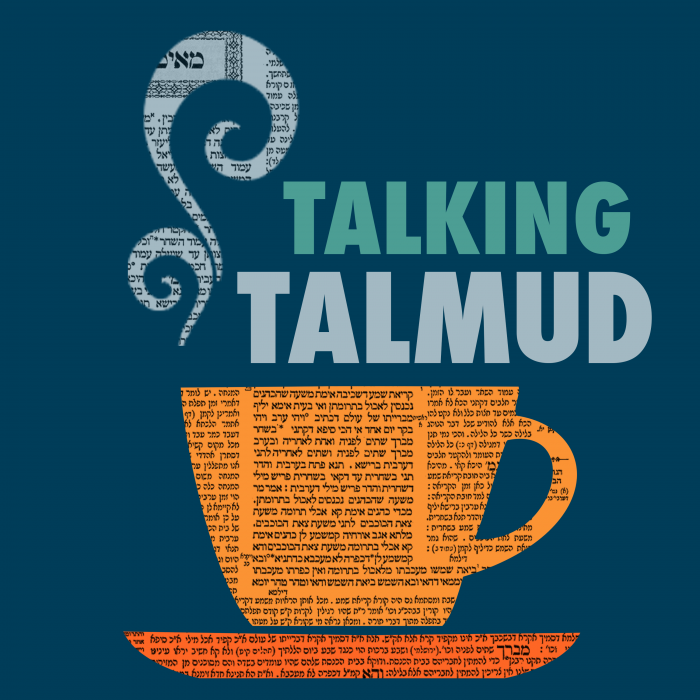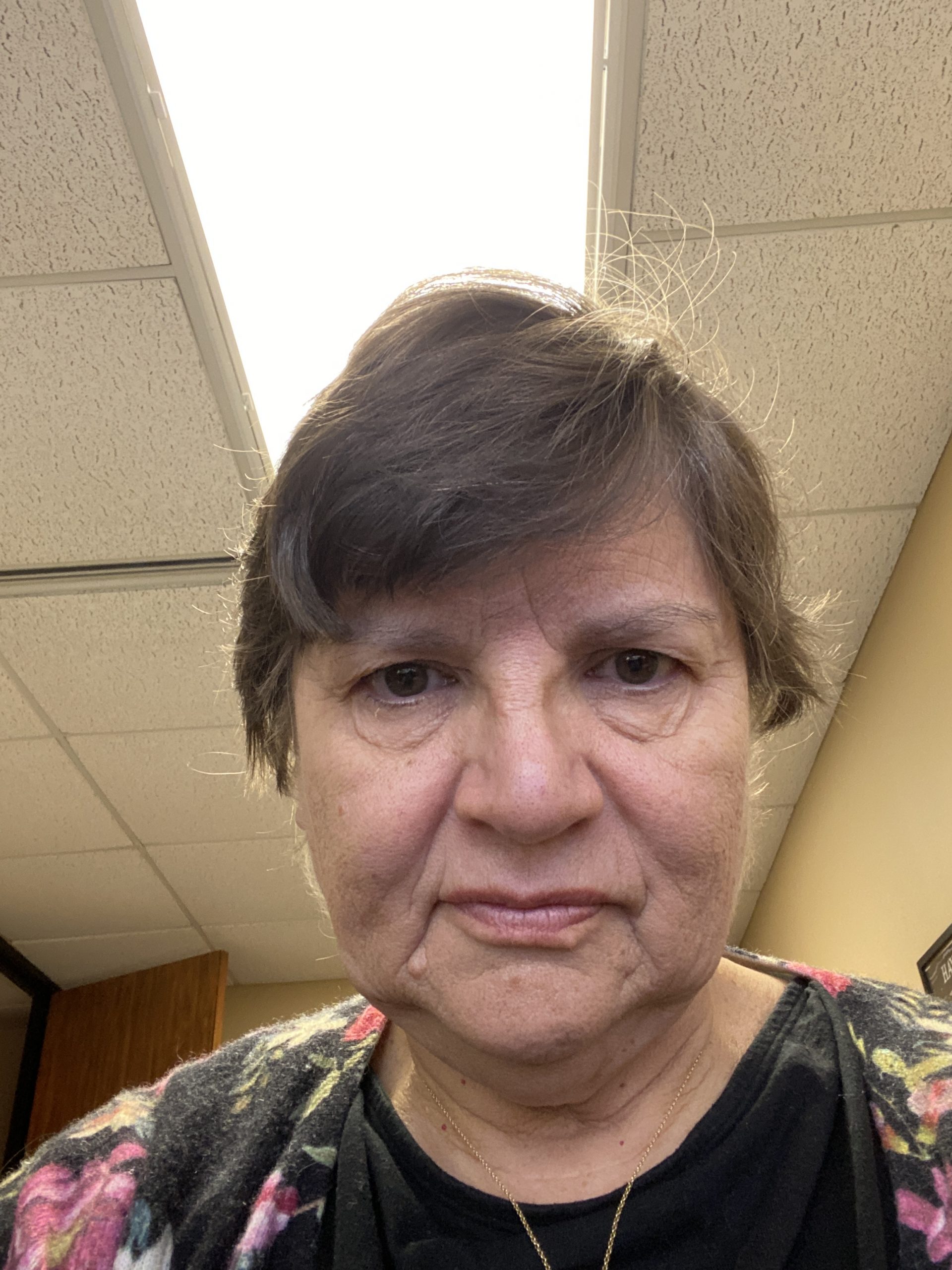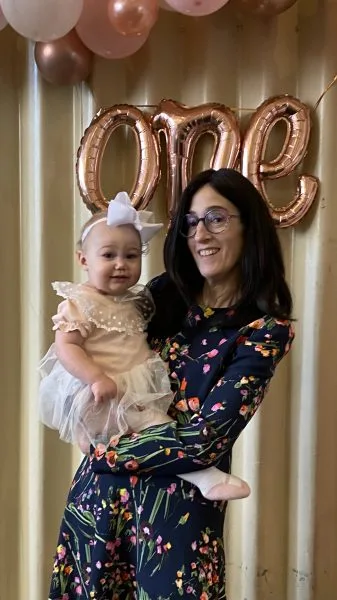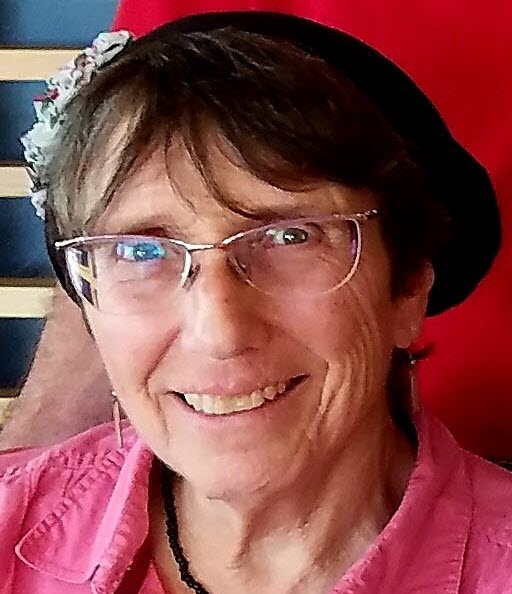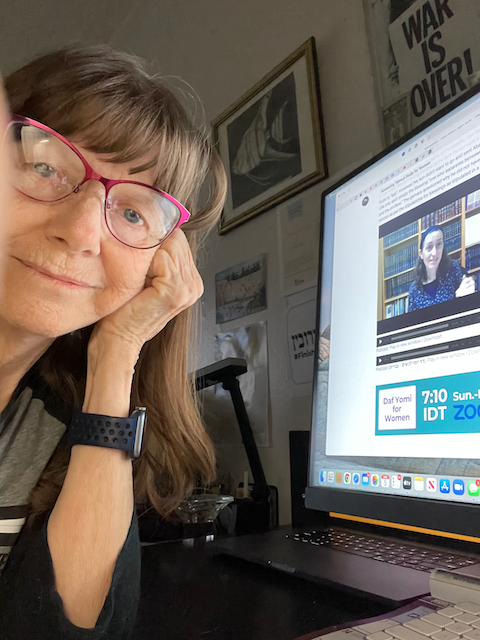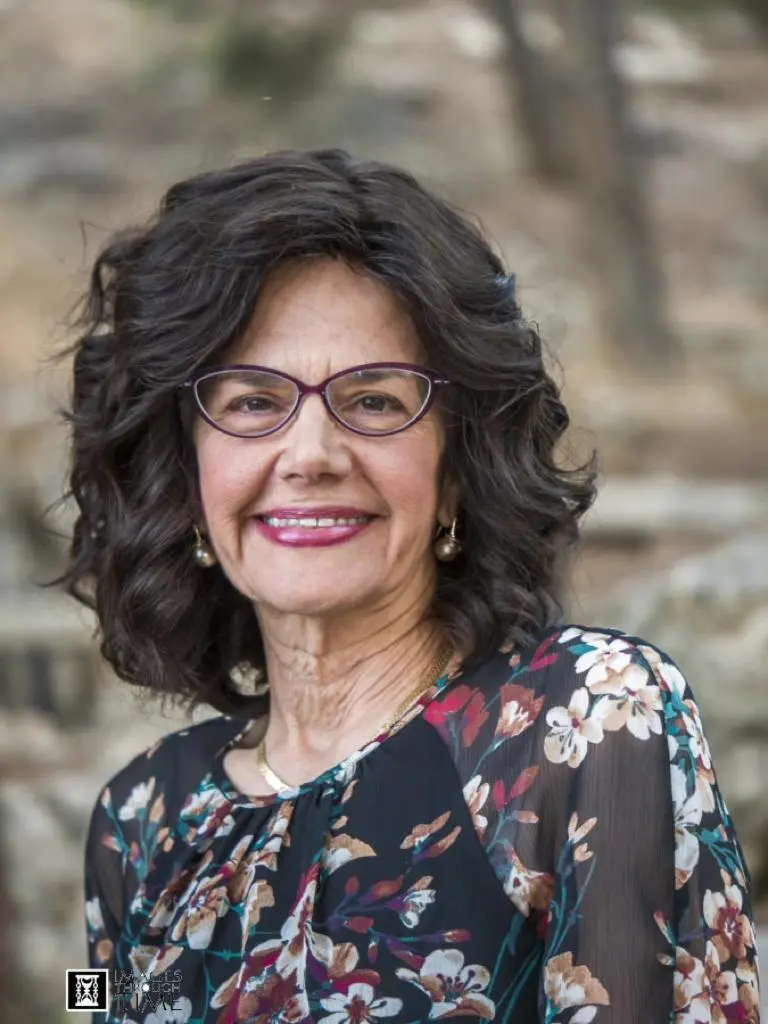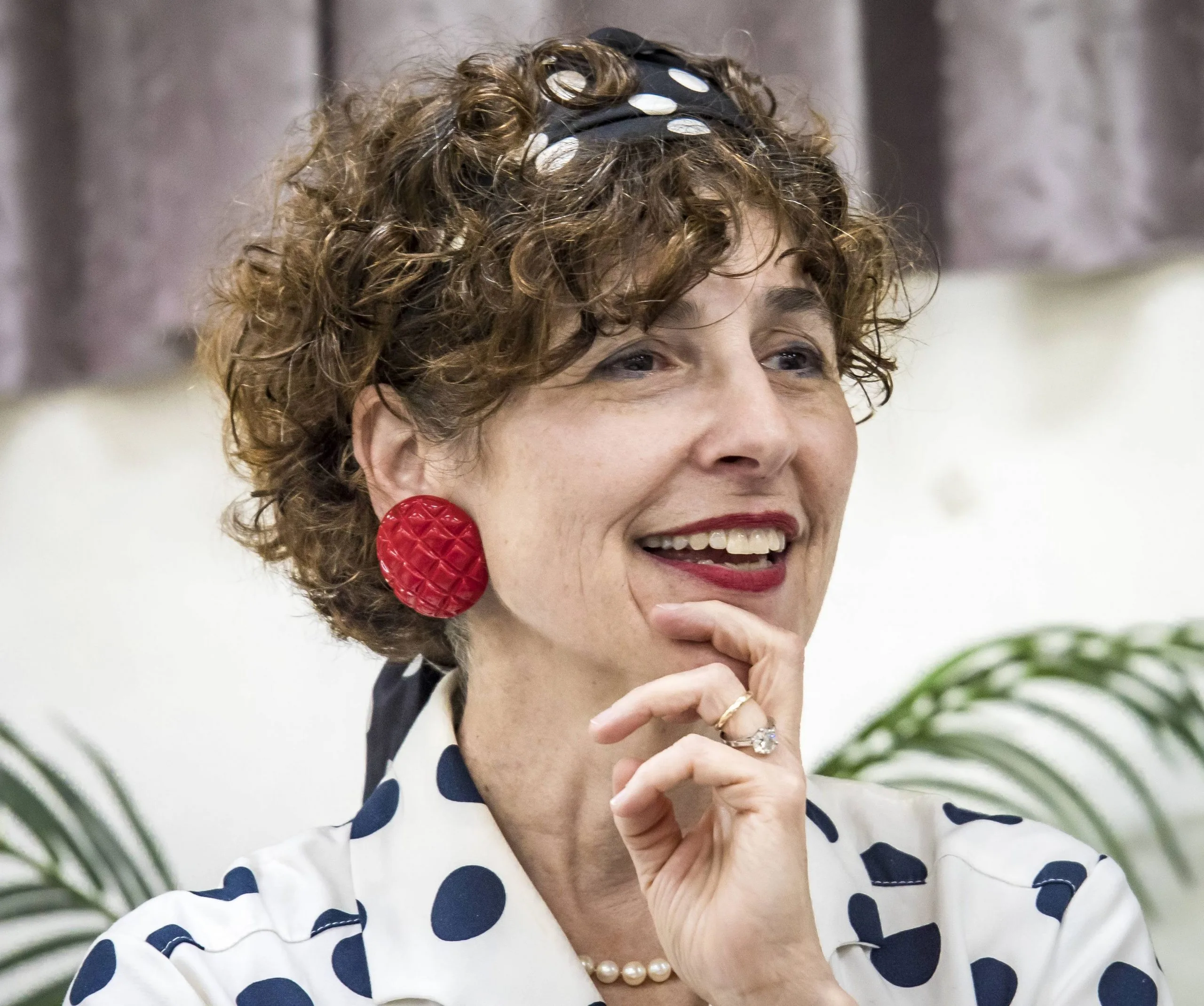Shabbat 74
אַף עַל גַּב דְּאִיכָּא דְּדָמְיָא לַהּ — חָשֵׁיב לַהּ. וְלִיחְשֹׁב נָמֵי כּוֹתֵשׁ! אָמַר אַבָּיֵי: שֶׁכֵּן עָנִי אוֹכֵל פִּתּוֹ בְּלֹא כְּתִישָׁה. רָבָא אָמַר: הָא מַנִּי — רַבִּי הִיא, דְּאָמַר אֲבוֹת מְלָאכוֹת אַרְבָּעִים חָסֵר אַחַת, וְאִי חָשֵׁיב כּוֹתֵשׁ הָוְיָא לֵיהּ אַרְבָּעִים. וְלַיפֵּיק חֲדָא מֵהָנָךְ וּלְעַיֵּיל כּוֹתֵשׁ! אֶלָּא מְחַוַּורְתָּא כִּדְאַבָּיֵי.
even though there is a different labor that is similar to it, the mishna enumerated it. Every labor that was performed in the Tabernacle is significant. The Gemara asks: And let him enumerate the labor of pounding as well, as wheat was pounded to remove its outer kernel in the Tabernacle. Abaye said: The labor of pounding is not one of the essential stages in the baking of bread, as paupers eat their bread without pounding the wheat to remove the bran. Therefore, since the tanna enumerated threshing, there was no need to include pounding among the labors enumerated in the breadmaking process. Rava said a different explanation: Who is the tanna of this mishna? It is Rabbi Yehuda HaNasi, who said: The primary categories of labor are forty-less-one, a number derived from a textual allusion. Therefore, the list cannot be expanded. And had the tanna enumerated pounding, there would be forty labors rather than thirty-nine. The Gemara asks: And let him take out one of these, selecting or winnowing, and insert pounding, thereby leaving the number intact. Rather, the reason that the tanna did not include pounding is clear, according to the explanation of Abaye.
תָּנוּ רַבָּנַן: הָיוּ לְפָנָיו מִינֵי אוֹכָלִין — בּוֹרֵר וְאוֹכֵל, בּוֹרֵר וּמַנִּיחַ. וְלֹא יִבְרוֹר, וְאִם בֵּירַר — חַיָּיב חַטָּאת. מַאי קָאָמַר? אָמַר עוּלָּא, הָכִי קָאָמַר: בּוֹרֵר וְאוֹכֵל לְבוֹ בַּיּוֹם, וּבוֹרֵר וּמַנִּיחַ לְבוֹ בַּיּוֹם. וּלְמָחָר לֹא יִבְרוֹר, וְאִם בֵּירַר — חַיָּיב חַטָּאת. מַתְקִיף לַהּ רַב חִסְדָּא: וְכִי מוּתָּר לֶאֱפוֹת לְבוֹ בַּיּוֹם? וְכִי מוּתָּר לְבַשֵּׁל לְבוֹ בַּיּוֹם?
The Sages taught in a baraita with regard to the laws of selecting: If there were several types of food before him, and he wants to remove one or more from the mixture, one selects and eats, selects and puts aside. And one may not select, and if one did select, he is liable to bring a sin-offering. The Gemara asks: What is the baraita saying? The end of this baraita contradicts the beginning. Ulla said: It is saying as follows: One selects and eats if he is doing so for the purpose of that day, Shabbat. And he selects and puts aside food for the purpose of that day. And one may not select for the purpose of the next day. And if one did select for the next day, he is liable to bring a sin-offering. Rav Ḥisda strongly objects to this explanation: And is it permitted to bake for that day, and is it permitted to cook for that day? No other labor prohibited on Shabbat may be performed for the purpose of Shabbat, and the same should hold true for selecting.
אֶלָּא אָמַר רַב חִסְדָּא: בּוֹרֵר וְאוֹכֵל פָּחוֹת מִכְּשִׁיעוּר, בּוֹרֵר וּמַנִּיחַ פָּחוֹת מִכְּשִׁיעוּר. וּכְשִׁיעוּר לֹא יִבְרוֹר, וְאִם בֵּירַר — חַיָּיב חַטָּאת. מַתְקִיף לַהּ רַב יוֹסֵף: וְכִי מוּתָּר לֶאֱפוֹת פָּחוֹת מִכְּשִׁיעוּר? אֶלָּא אָמַר רַב יוֹסֵף: בּוֹרֵר וְאוֹכֵל בַּיָּד, בּוֹרֵר וּמַנִּיחַ בַּיָּד. בְּקָנוֹן וּבְתַמְחוּי לֹא יִבְרוֹר, וְאִם בֵּירַר — פָּטוּר אֲבָל אָסוּר, וּבְנָפָה וּבִכְבָרָה לֹא יִבְרוֹר, וְאִם בֵּירַר — חַיָּיב חַטָּאת.
Rather, Rav Ḥisda said it is to be understood as follows: One selects and eats less than the measure of a dried fig-bulk, which is the smallest amount for which one is liable by Torah law. One selects and puts aside less than that measure. And one may not select the measure of a dried fig-bulk, and if one did select that measure, he is liable to bring a sin-offering. Rav Yosef strongly objects to this explanation: And is it permitted to bake less than the measure for liability ab initio? Although performing a prohibited labor on a minute measure does not engender liability, it is prohibited. Therefore, the baraita cannot be interpreted as saying that one may ab initio select an amount that is less than the measure for liability. Rather, Rav Yosef said: One selects and eats by hand, selects and put aside by hand. However, with a basket [kanon] or with a plate, both of which are large, flat vessels used for sorting sizeable quantities, one may not select ab initio. And if he did select, he is exempt from bringing a sin-offering if he did so unwittingly. If he did so intentionally he is exempt from stoning. However, it is prohibited. And one may not select with a sieve or with a sifter. And if he did select with those utensils, he is liable to bring a sin-offering.
מַתְקִיף לַהּ רַב הַמְנוּנָא: מִידֵּי קָנוֹן וְתַמְחוּי קָתָנֵי? אֶלָּא אָמַר רַב הַמְנוּנָא: בּוֹרֵר וְאוֹכֵל אוֹכֶל מִתּוֹךְ הַפְּסוֹלֶת, בּוֹרֵר וּמַנִּיחַ אוֹכֶל מִתּוֹךְ הַפְּסוֹלֶת. פְּסוֹלֶת מִתּוֹךְ אוֹכֶל לֹא יִבְרוֹר, וְאִם בֵּירַר — חַיָּיב חַטָּאת. מַתְקִיף לַהּ אַבָּיֵי: מִידֵּי אוֹכֶל מִתּוֹךְ פְּסוֹלֶת קָתָנֵי? אֶלָּא אָמַר אַבָּיֵי: בּוֹרֵר וְאוֹכֵל לְאַלְתַּר, וּבוֹרֵר וּמַנִּיחַ לְאַלְתַּר, וּלְבוֹ בַּיּוֹם — לֹא יִבְרוֹר, וְאִם בֵּירַר — נַעֲשָׂה כְּבוֹרֵר לָאוֹצָר וְחַיָּיב חַטָּאת. אַמְרוּהָ רַבָּנַן קַמֵּיהּ דְּרָבָא, אֲמַר לְהוּ: שַׁפִּיר אָמַר נַחְמָנִי.
Rav Hamnuna strongly objects to this: Does the mishna teach anything about a basket or a plate? Rav Yosef’s explanation is based on the addition of details that do not appear in the baraita either. Rather, Rav Hamnuna said: One selects and eats if he is removing food from the waste, and similarly, selects and puts aside if he is removing food from the waste. However, one may not select waste from food, and if he did select in that manner, he is liable to bring a sin-offering. The typical method of selecting is the removal of waste from the food. An individual who alters the procedure is not liable. Abaye strongly objects to this: Does the mishna teach anything about food from waste? That detail is not mentioned in the baraita either. Rather, Abaye said: One selects and eats if he is removing food for immediate use, and similarly one selects and puts aside for immediate use. However, one may not select for use later that same day. And if he did select, he is considered like one who selects for storage, and he is liable to bring a sin-offering. This explanation requires no emendation of the mishna. It is merely an interpretation of the phrase: One selects and eats, as referring to selecting for immediate use. The Gemara relates that the Sages stated Abaye’s explanation of the baraita before Rava. He said to them: Naḥmani, Abaye, spoke well.
הָיוּ לְפָנָיו שְׁנֵי מִינֵי אוֹכָלִין, וּבֵירַר וְאָכַל, וּבֵירַר וְהִנִּיחַ. רַב אָשֵׁי מַתְנֵי: פָּטוּר, רַבִּי יִרְמְיָה מִדִּיפְתִּי מַתְנֵי: חַיָּיב. רַב אָשֵׁי מַתְנֵי פָּטוּר, וְהָא תָּנֵי חַיָּיב! לָא קַשְׁיָא: הָא בְּקָנוֹן וְתַמְחוּי, הָא בְּנָפָה וּכְבָרָה.
Until this point, the Gemara discussed selecting food from waste. The Gemara proceeds to discuss a different case. If there were two types of foods before him, and he selected and ate one type, and selected and put aside one type, Rav Ashi taught: He is exempt. Rav Yirmeya from Difti taught: He is liable. Rav Ashi taught: He is exempt. The Gemara asks: Wasn’t it taught in a baraita that in that case he is liable? The Gemara answers: This is not difficult: This, where Rav Ashi said that he is exempt, is referring to a case where he selects by means of a basket or a plate, as that method of selecting is not considered expert work; and that, where the baraita said he is liable, is in a case where he selects by means of a sieve or a sifter, as that method of selecting is considered expert work.
כִּי אֲתָא רַב דִּימִי, אָמַר: שַׁבְּתָא דְּרַב בִּיבִי הֲוַאי, וְאִיקְּלַעוּ רַבִּי אַמֵּי וְרַבִּי אַסִּי, שְׁדָא קַמַּיְיהוּ כַּלְכַּלָּה דְפֵירֵי. וְלָא יָדַעְנָא אִי מִשּׁוּם דְּסָבַר אוֹכֶל מִתּוֹךְ פְּסוֹלֶת אָסוּר, אִי מִשּׁוּם עַיִן יָפָה הוּא דְּמִכַּוֵּין.
The Gemara relates that when Rav Dimi came from Eretz Yisrael to Babylonia he said: It was the Shabbat of Rav Beivai to serve food to the students, and Rabbi Ami and Rabbi Asi happened to come to his house. He placed before them a basket of fruits without removing the leaves and the stems. And I do not know whether he did so because he holds that it is prohibited to select food from waste when it is not for immediate consumption, or whether he did so because he intended to show generosity to his guests by creating the impression that the basket was full. A fruit-filled basket conveys to the guests that there is plenty and that they may take as much as they wish. Therefore, there is no clear proof from this incident.
חִזְקִיָּה אָמַר: הַבּוֹרֵר תּוּרְמוֹסִים מִתּוֹךְ פְּסוֹלֶת שֶׁלָּהֶן — חַיָּיב. לֵימָא קָסָבַר חִזְקִיָּה אוֹכֶל מִתּוֹךְ פְּסוֹלֶת אָסוּר? שָׁאנֵי תּוּרְמוֹסָא
Ḥizkiya said: One who selects lupines from their waste after boiling them is liable for performing the prohibited labor of selecting. The Gemara asks: Let us say, based on this statement, that Ḥizkiya holds that even selecting food from waste is prohibited. The Gemara rejects this proof: Lupines are different,
דְּשָׁלְקִי לֵיהּ שִׁבְעָא זִימְנֵי, וְאִי לָא שָׁקְלִי לֵיהּ מַסְרַח — וְכִפְסוֹלֶת מִתּוֹךְ אוֹכֶל דָּמֵי.
as they are boiled seven times. And, if one does not remove them from the shells, they rot. Therefore, it is considered like removing waste from food. The rotting edible portion of the lupine causes the shell to reek. Removing the edible portion, therefore, has the legal status of removing waste.
וְהַטּוֹחֵן. אָמַר רַב פָּפָּא: הַאי מַאן דְּפָרֵים סִילְקָא — חַיָּיב מִשּׁוּם טוֹחֵן. אָמַר רַב מְנַשֶּׁה: הַאי מַאן דְּסָלֵית סִילְתֵּי — חַיָּיב מִשּׁוּם טוֹחֵן. אָמַר רַב אָשֵׁי: אִי קָפֵיד אַמִּשְׁחֲתָא — חַיָּיב מִשּׁוּם מְחַתֵּךְ.
We learned in the mishna, among those liable for performing primary categories of labor: And one who grinds. Rav Pappa said: One who chops beets into small pieces on Shabbat is liable due to the prohibited labor of grinding, as the actions are similar. Rav Menashe said: One who chops wood chips for sawdust (Rambam) is liable due to the prohibited labor of grinding. Rav Ashi said: If he is particular in his chopping with regard to the measurement, i.e., he is careful to cut all the chips to a particular size, he is also liable due to the labor of cutting.
וְהַלָּשׁ וְהָאוֹפֶה. אָמַר רַב פָּפָּא: שְׁבַק תַּנָּא דִידַן בִּישּׁוּל סַמְמָנִין דַּהֲוָה בְּמִשְׁכָּן וּנְקַט אוֹפֶה?! תַּנָּא דִידַן סִידּוּרָא דְפַת נָקֵט.
We learned in the mishna, among those liable for performing primary categories of labor: And one who kneads and one who bakes. Rav Pappa said: Our tanna left out the labor of cooking the spices for dye, which was performed in the Tabernacle, and included the labor of baking, which was not performed in the construction of the Tabernacle. If, as stated above, all the primary categories of labor were derived from the labors in the Tabernacle, why did the tanna omit cooking? The Gemara answers: Our tanna cited the sequence of preparing bread, which was the underlying principle behind his organization of the primary categories of labor. He opened with plowing and concluded with the preparation of bread.
אָמַר רַב אַחָא בַּר רַב עַוִּירָא: הַאי מַאן דִּשְׁדָא סִיכְּתָא לְאַתּוּנָא — חַיָּיב מִשּׁוּם מְבַשֵּׁל. פְּשִׁיטָא! מַהוּ דְּתֵימָא לְשָׁרוֹרֵי מָנָא קָא מִיכַּוֵין, קָא מַשְׁמַע לַן דְּמִירְפָּא רָפֵי וַהֲדַר קָמֵיט. אָמַר רַבָּה בַּר רַב הוּנָא: הַאי מַאן דְּאַרְתַּח כּוּפְרָא — חַיָּיב מִשּׁוּם מְבַשֵּׁל. פְּשִׁיטָא! מַהוּ דְּתֵימָא כֵּיוָן דַּהֲדַר וְאִיקִּישׁ אֵימָא לָא, קָא מַשְׁמַע לַן.
Rav Aḥa bar Rav Avira said: One who places a peg into an oven to dry is liable for performing the labor of cooking. The Gemara asks: That is obvious. The Gemara answers: Lest you say that he intends to strengthen the utensil, as ultimately, the peg is hardened in the oven, in contrast to cooking in which the fire softens the item being cooked. Therefore, he teaches us that initially the wood is softened in the oven, and only afterward it is hardened. Rabba bar Rav Huna said: One who boils pitch is liable for performing the labor of cooking. The Gemara asks: That is obvious. The Gemara answers: Lest you say that since it proceeds to harden afterward, say that it is not considered cooking. One might think that since the pitch was hard before it was cooked and will ultimately be hard after it is cooked, boiling pitch is not considered cooking. Therefore, he teaches us that even a temporary change is considered cooking.
אָמַר רָבָא: הַאי מַאן דַּעֲבַד חָבִיתָא — חַיָּיב מִשּׁוּם שֶׁבַע חַטָּאוֹת. תַּנּוּרָא — חַיָּיב מִשּׁוּם שְׁמוֹנֶה חַטָּאוֹת. אָמַר אַבָּיֵי: הַאי מַאן דַּעֲבַד חַלְּתָא — חַיָּיב אַחַת עֶשְׂרֵה חַטָּאוֹת. וְאִי חַיְּיטֵיהּ לְפוּמֵּיהּ — חַיָּיב שְׁלֹשׁ עֶשְׂרֵה חַטָּאוֹת.
Rava said: One who unwittingly crafted an earthenware barrel on Shabbat is liable to bring seven sin-offerings: He crumbles the lumps of dirt; which is (1) grinding; (2) selects the stones from the dirt; (3) kneads the mortar; (4) cuts the mortar into pieces of a suitable size; (5) builds the mold; (6) kindles the fire, and then fires the earthenware vessel, which is (7) baking (ge’onim). One who crafts an oven is liable for eight sin-offerings, since in addition to those seven labors, he spreads another layer of mortar to finish the job, performing the prohibited labor of (8) smoothing. Abaye said: One who unwittingly crafts a receptacle from reeds on Shabbat is liable to bring eleven sin-offerings. In pruning the reeds, he performed both (1) reaping and (2) planting, as he stimulates growth of the remaining reeds. He (3) gathers the reeds; (4) selects them; (5) smooths and levels them; cuts them into small pieces, which is (6) grinding; and (7) cuts them to a particular measurement. When he begins weaving the reeds, he performs the labors of (8) stretching the warp; (9) constructing two meshes; and (10) weaving. Crafting the object as a whole constitutes (11) building (ge’onim). And if he sews the mouth of the receptacle, he is liable to bring thirteen sin-offerings with the added labors of (12) sewing and (13) tying.
הַגּוֹזֵז אֶת הַצֶּמֶר וְהַמְלַבְּנוֹ. אָמַר רַבָּה בַּר בַּר חָנָה אָמַר רַבִּי יוֹחָנָן: הַטּוֹוֶה צֶמֶר שֶׁעַל גַּבֵּי בְּהֵמָה בְּשַׁבָּת — חַיָּיב שָׁלֹשׁ חַטָּאוֹת: אַחַת מִשּׁוּם גּוֹזֵז, וְאַחַת מִשּׁוּם מְנַפֵּץ, וְאַחַת מִשּׁוּם טוֹוֶה. רַב כָּהֲנָא אָמַר: אֵין דֶּרֶךְ גְּזִיזָה בְּכָךְ, וְאֵין דֶּרֶךְ מְנַפֵּץ בְּכָךְ, וְאֵין דֶּרֶךְ טְוִויָּה בְּכָךְ. וְלָא? וְהָתַנְיָא מִשְּׁמֵיהּ דְּרַבִּי נְחֶמְיָה: שָׁטוּף בָּעִזִּים, וְטָווּי בָּעִזִּים, אַלְמָא טְוִויָּה עַל גַּבֵּי בְּהֵמָה שְׁמָהּ טְוִויָּה! חָכְמָה יְתֵירָה שָׁאנֵי.
We learned in the mishna, among those liable for performing primary categories of labor: One who shears wool, and one who whitens it, which are labors in the process of shearing and spinning wool. Rabba bar bar Ḥana said that Rabbi Yoḥanan said: One who unwittingly spins wool still attached on the back of an animal on Shabbat is liable to bring three sin-offerings: One due to shearing, since, in the process, some of the wool is detached from the sheep; and one due to combing the wool; and one due to spinning. Rav Kahana said: This is not a typical manner of shearing, and this is not a typical manner of combing, and this is not a typical manner of spinning. The Gemara asks: And is that not a typical manner of spinning? Wasn’t it taught in a baraita in the name of Rabbi Neḥemya that the verse in the context of the work of the Tabernacle: “And all the women whose hearts lifted them with wisdom spun the goats” (Exodus 35:26) means that they washed the hair on the goats, and they spun it into threads on the goats themselves without first shearing the hair? Apparently, spinning on the back of an animal is considered a typical manner of spinning. The Gemara answers: Extraordinary wisdom is different. Although certain individuals are capable of spinning wool that way, the typical person is not capable of performing that feat.
תָּנוּ רַבָּנַן: הַתּוֹלֵשׁ אֶת הַכָּנָף וְהַקּוֹטְמוֹ וְהַמּוֹרְטוֹ — חַיָּיב שָׁלֹשׁ חַטָּאוֹת. וְאָמַר רַבִּי שִׁמְעוֹן בֶּן לָקִישׁ: תּוֹלֵשׁ — חַיָּיב מִשּׁוּם גּוֹזֵז, קוֹטֵם — חַיָּיב מִשּׁוּם מְחַתֵּךְ, מְמָרֵט — חַיָּיב מִשּׁוּם מְמַחֵק.
The Sages taught in a Tosefta: One who unwittingly plucks a large feather from the wing of a bird on Shabbat, and who snips the tip of the feather, and who pulls out the thin threads that comprise the feather is liable to bring three sin-offerings. And Rabbi Shimon ben Lakish said in explanation: One who plucks the wing is liable due to the labor of shearing. One who snips the tip of the feather is liable due to cutting. And one who pulls out the threads is liable due to smoothing.
הַקּוֹשֵׁר וְהַמַּתִּיר. קְשִׁירָה בַּמִּשְׁכָּן הֵיכָא הֲוַאי? אָמַר רָבָא: שֶׁכֵּן קוֹשְׁרִין בְּיִתְדוֹת אֹהָלִים. קוֹשְׁרִים?! הָהוּא קוֹשֵׁר עַל מְנָת לְהַתִּיר הוּא. אֶלָּא אָמַר אַבָּיֵי: שֶׁכֵּן אוֹרְגֵי יְרִיעוֹת שֶׁנִּפְסְקָה לָהֶן נִימָא קוֹשְׁרִים אוֹתָהּ. אֲמַר לֵיהּ רָבָא: תָּרֵצְתְּ קוֹשֵׁר, מַתִּיר מַאי אִיכָּא לְמֵימַר? וְכִי תֵּימָא: דְּאִי מִתְרְמֵי לֵיהּ תְּרֵי (חוּטֵי) קִיטְרֵי בַּהֲדֵי הֲדָדֵי, שָׁרֵי חַד וְקָטַר חַד — הַשְׁתָּא לִפְנֵי מֶלֶךְ בָּשָׂר וָדָם אֵין עוֹשִׂין כֵּן, לִפְנֵי מֶלֶךְ מַלְכֵי הַמְּלָכִים הַקָּדוֹשׁ בָּרוּךְ הוּא, עוֹשִׂין?! אֶלָּא אָמַר רָבָא וְאִיתֵּימָא רַבִּי עִילַּאי, שֶׁכֵּן צָדֵי חִלָּזוֹן קוֹשְׁרִין וּמַתִּירִין.
We learned in the mishna, among those liable for performing primary categories of labor: One who ties and one who unties. The Gemara asks: Where was there tying in the Tabernacle? Rava said: They tied the tents of the Tabernacle to the pegs. The Gemara rejects this: And is that considered performance of the labor of tying? That was tying a knot in order to untie it. When the children of Israel departed from an encampment, they dismantled the Tabernacle, which involved untying all of the knots. One is not liable for tying a temporary knot on Shabbat. Rather, Abaye said: As the weavers of curtains for the Tabernacle, when a thread would rip, they would tie it. Rava said to him: You have resolved the problem with regard to the labor of tying; however, with regard to the labor of untying, what can be said? Where, in the construction of the Tabernacle, was the labor of untying performed? And if you say that it was performed if one found two threads with knots tied next to each other, he untied one and left one tied; now, before a king of flesh and blood one would not do so, as the curtain would look flawed, in the Tabernacle, before the King of kings, the Holy One, Blessed be He, would one do so? Rather, Rava said, and some say that Rav Elai said: The trappers of ḥilazon, whose blood was used in the Tabernacle as a dye, tie and untie their nets.
וְהַתּוֹפֵר שְׁתֵּי תְּפִירוֹת. וְהָא לָא קָיְימָא! אָמַר רַבָּה בַּר בַּר חָנָה אָמַר רַבִּי יוֹחָנָן: וְהוּא שֶׁקְּשָׁרָן.
We learned in the mishna, among those liable for performing primary categories of labor: And one who sews two stitches. The Gemara asks: That does not endure; two stitches will unravel immediately. A prohibited labor whose result is temporary is not considered a prohibited labor. Rabba bar bar Ḥana said that Rabbi Yoḥanan said: That has the legal status of a prohibited labor only in a case where, after sewing the stitches, he tied them. He tied a knot at each of the two ends of the thread so that the stitches would not unravel.
הַקּוֹרֵעַ עַל מְנָת לִתְפּוֹר. קְרִיעָה בַּמִּשְׁכָּן מִי הֲוָה? רַבָּה וְרַבִּי זֵירָא דְּאָמְרִי תַּרְוַויְיהוּ:
We learned in the mishna, among those liable for performing primary categories of labor: One who tears in order to sew two stitches. The Gemara asks: Was there tearing in the construction of the Tabernacle? The Gemara answers that it was Rabba and Rabbi Zeira who both said the following explanation:



